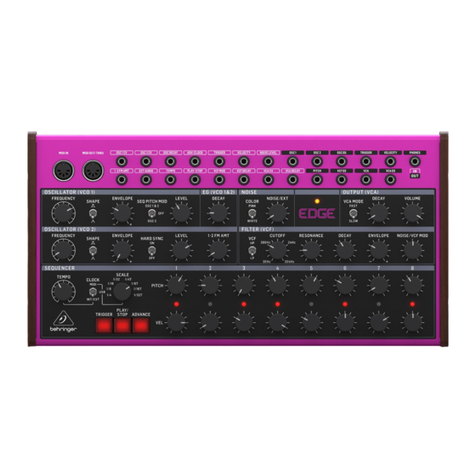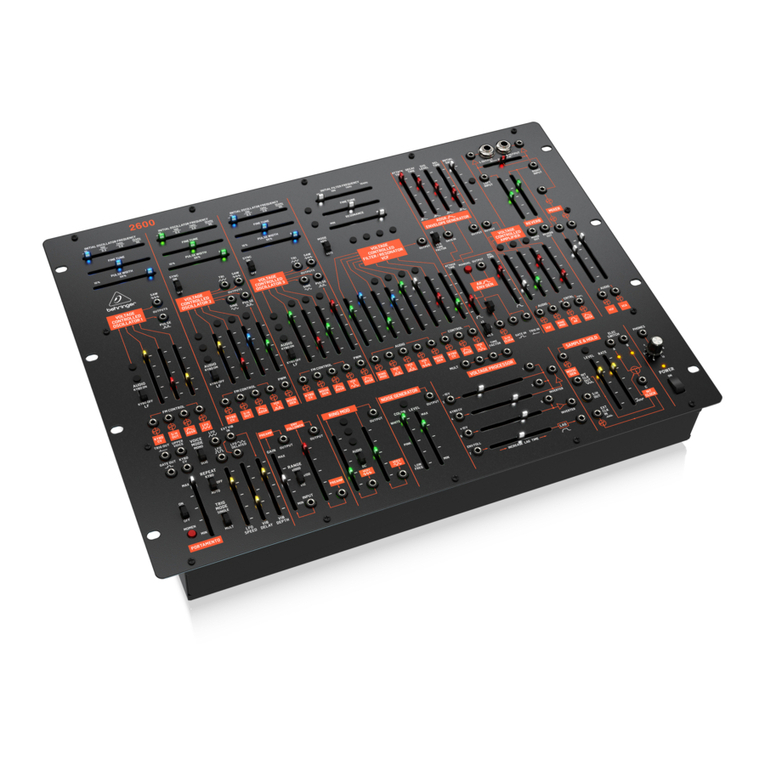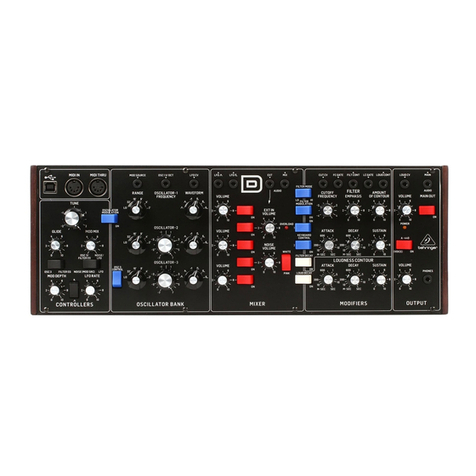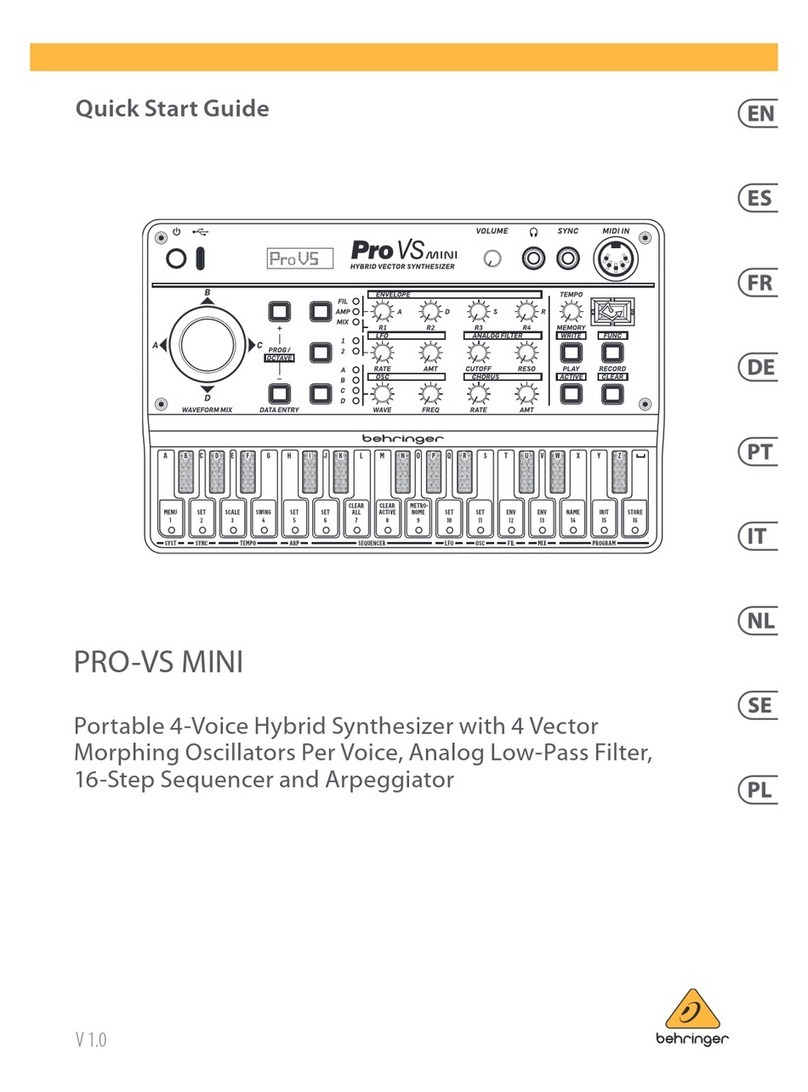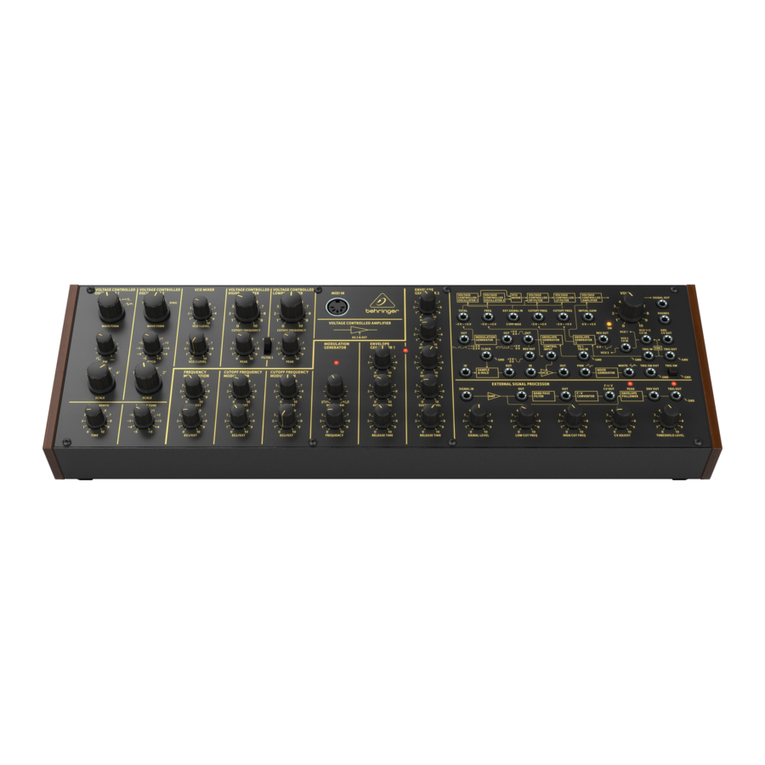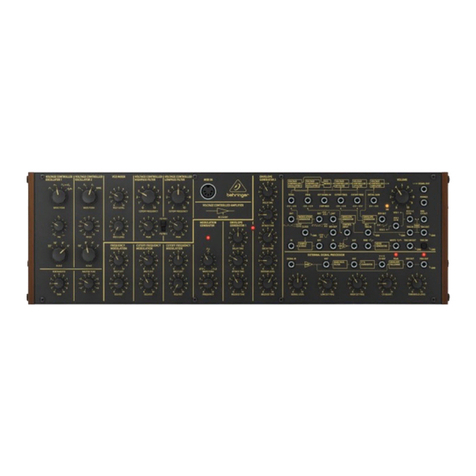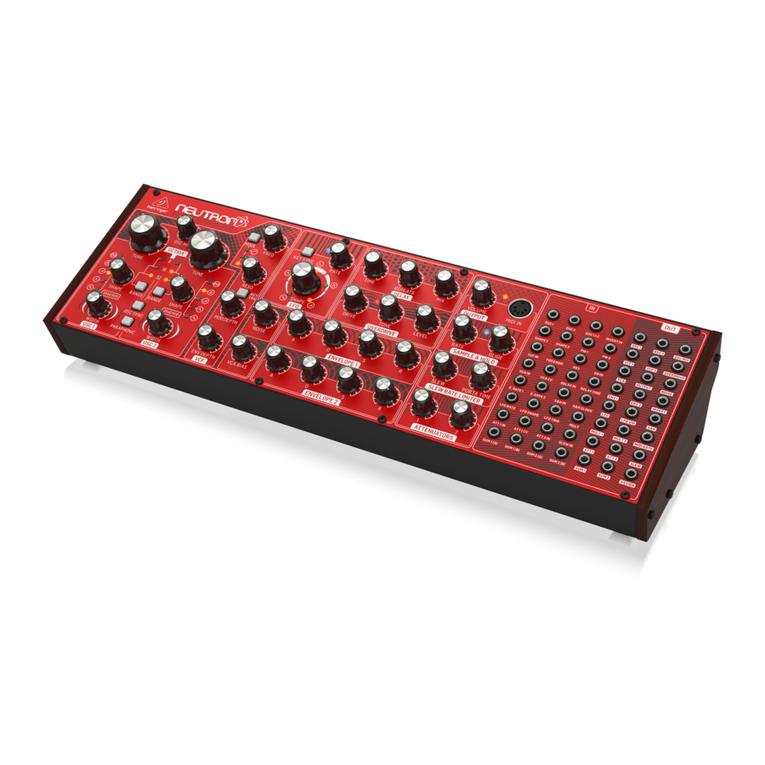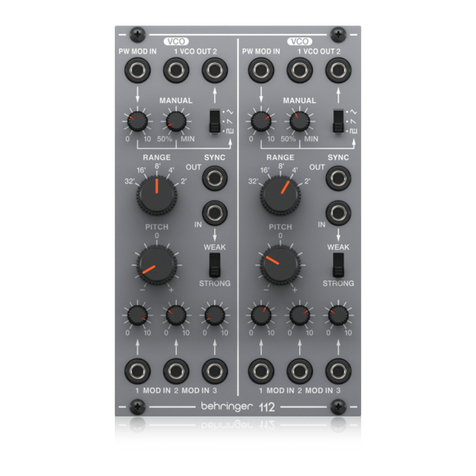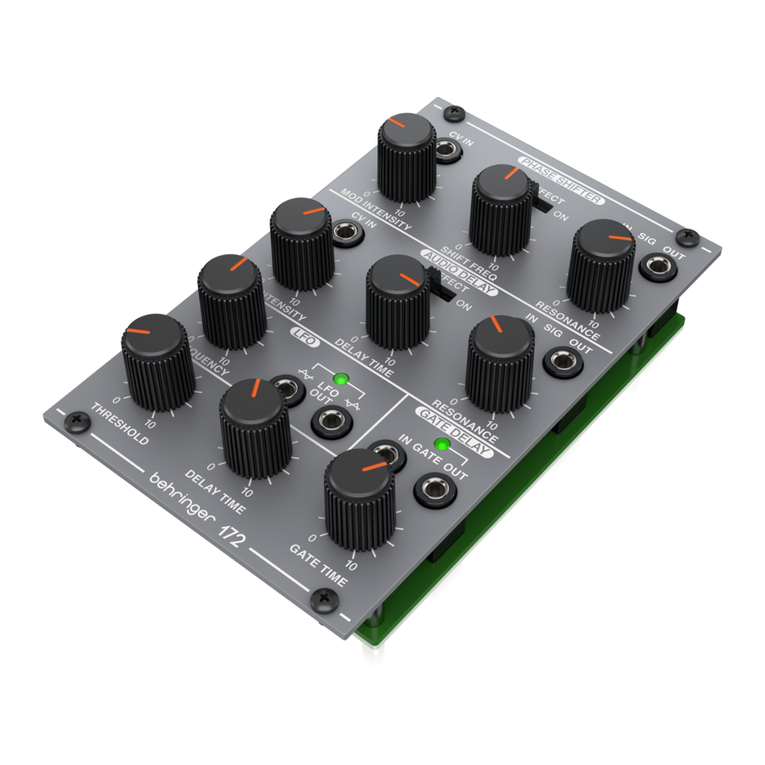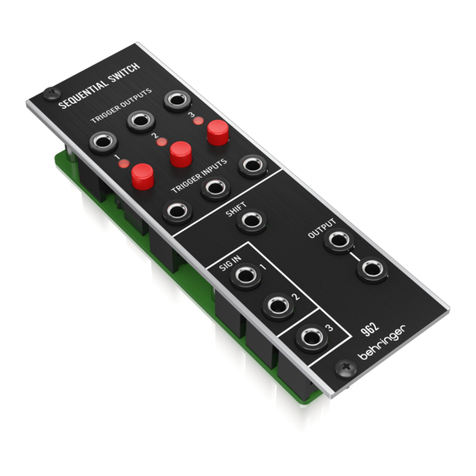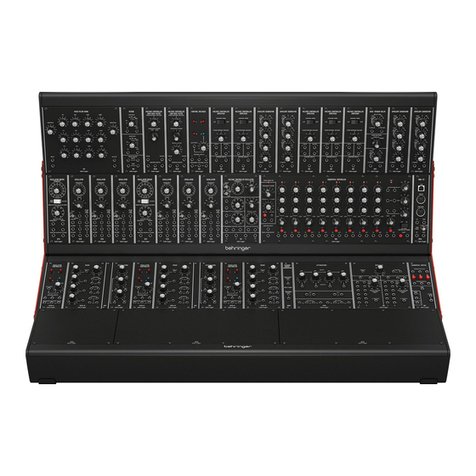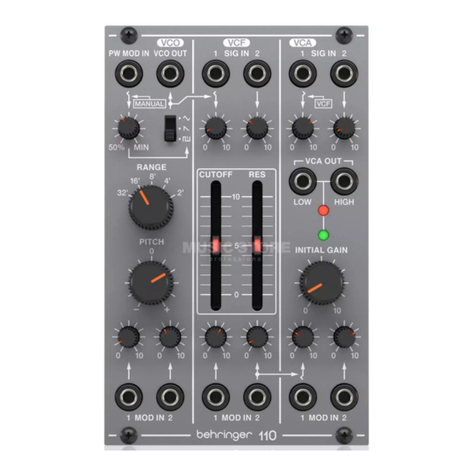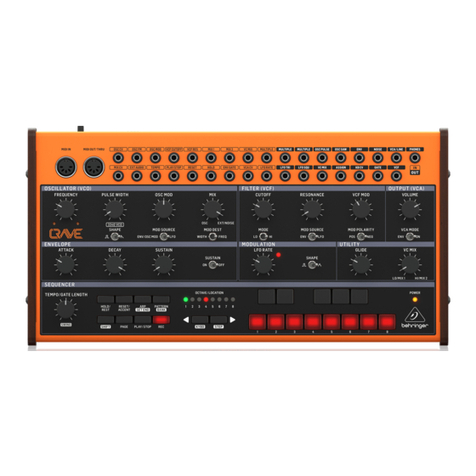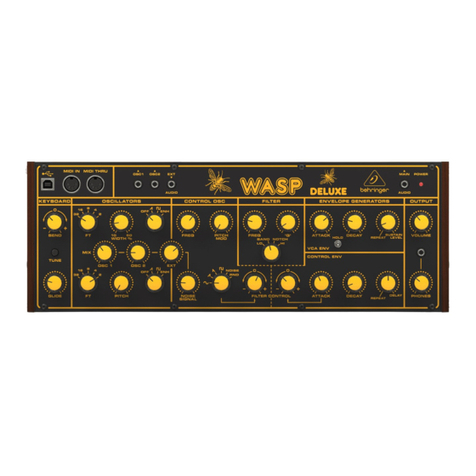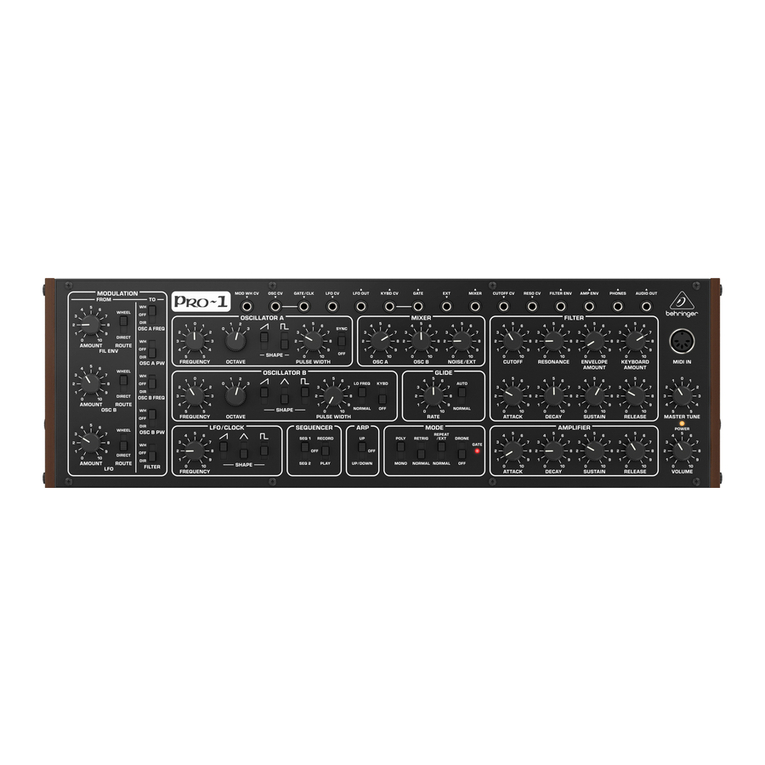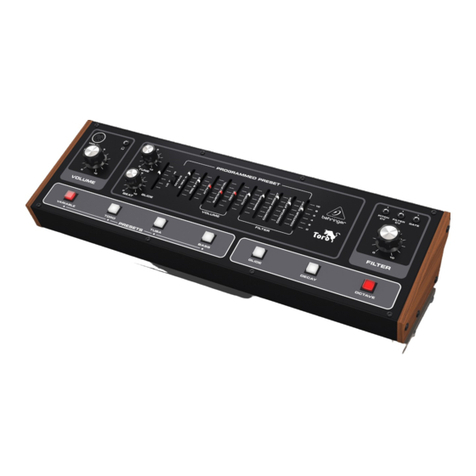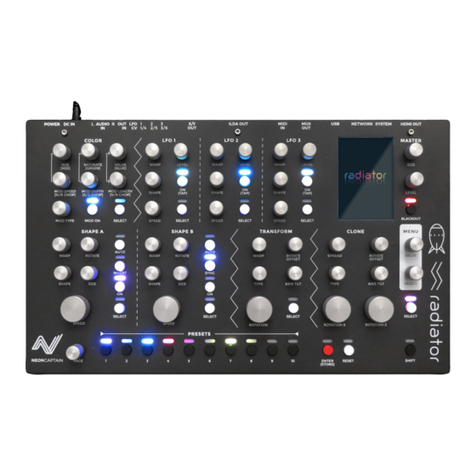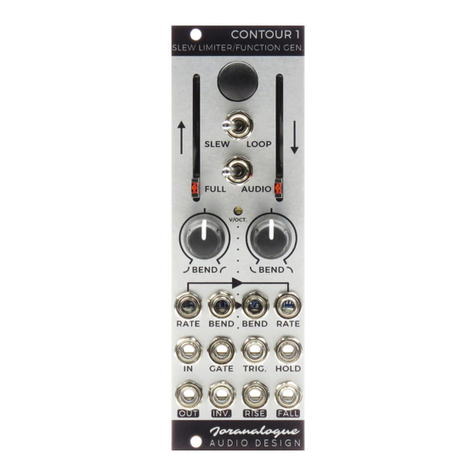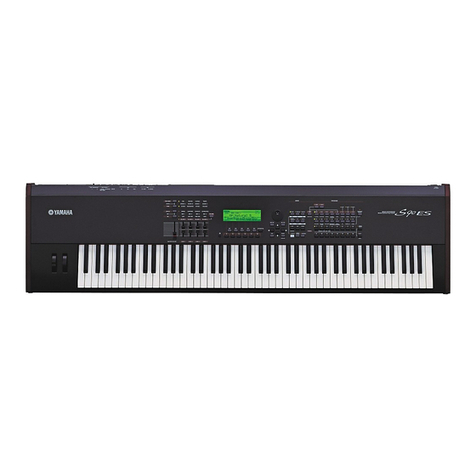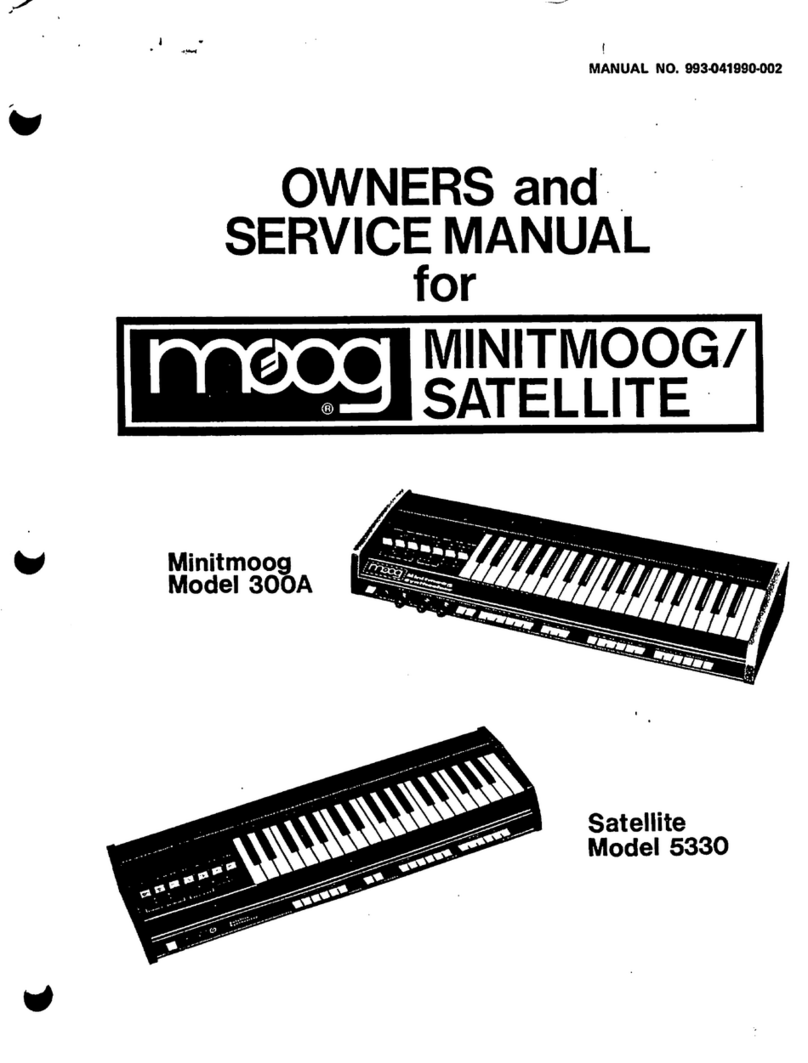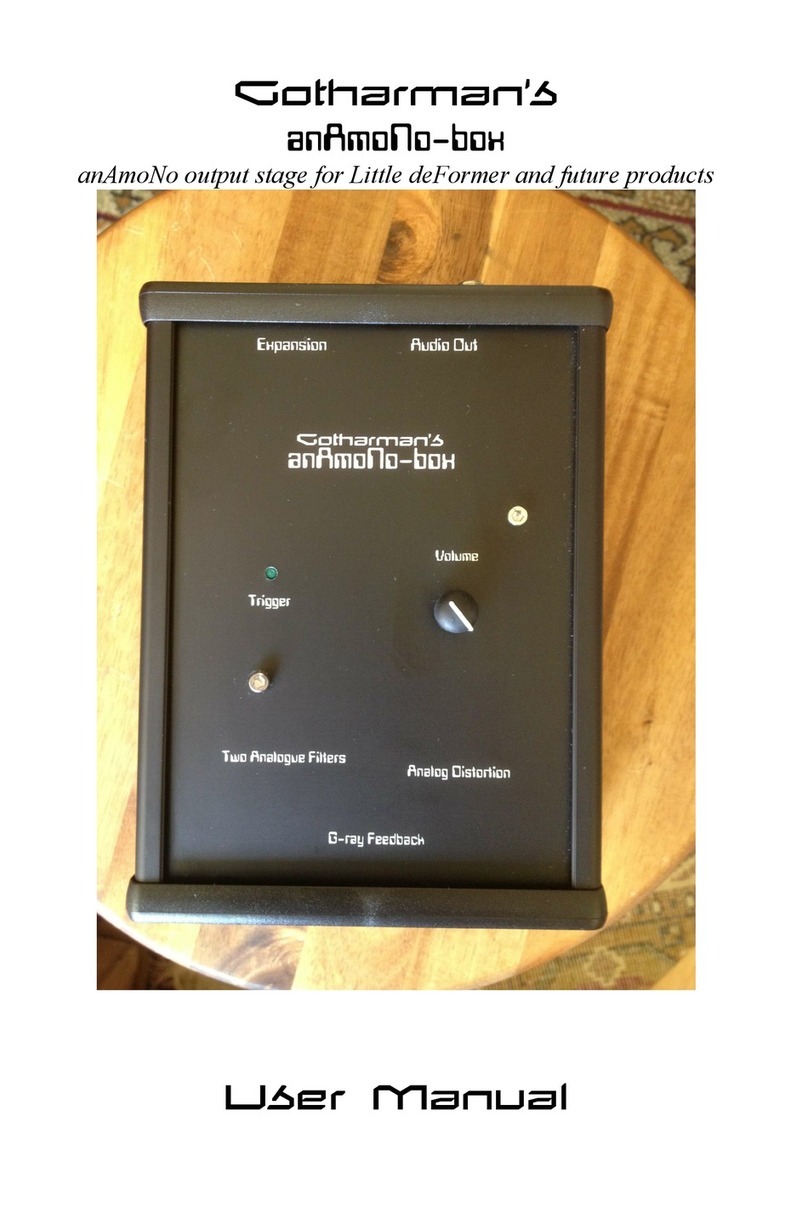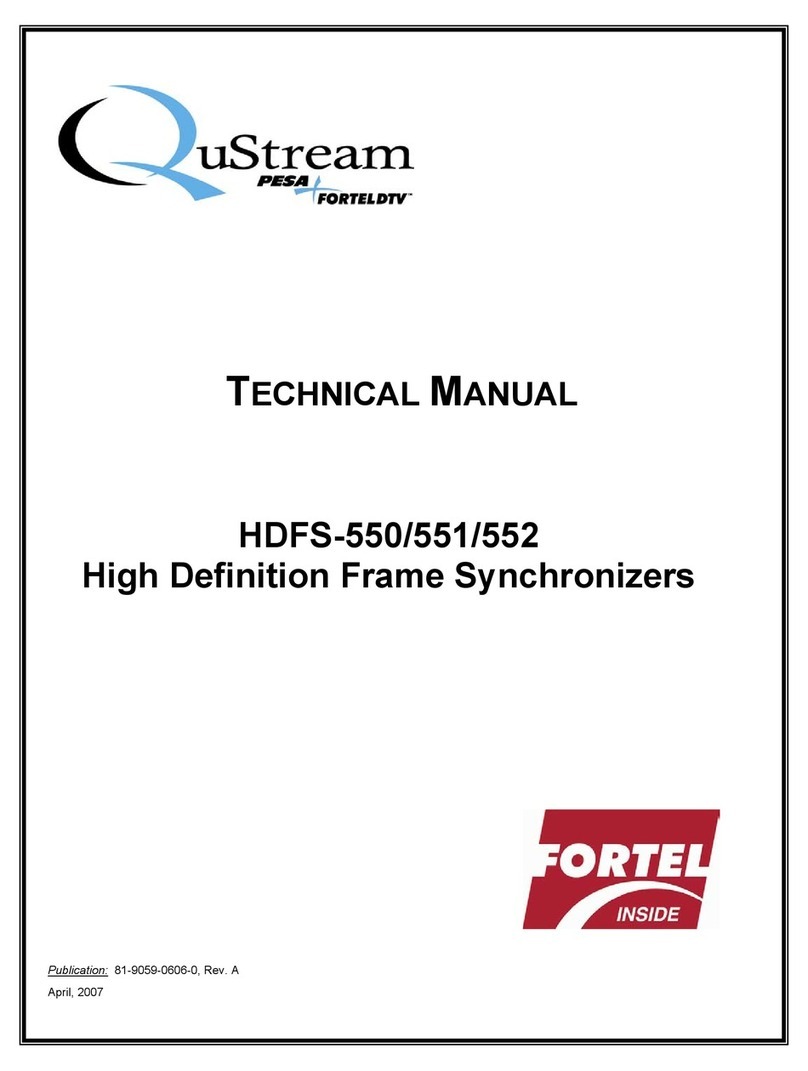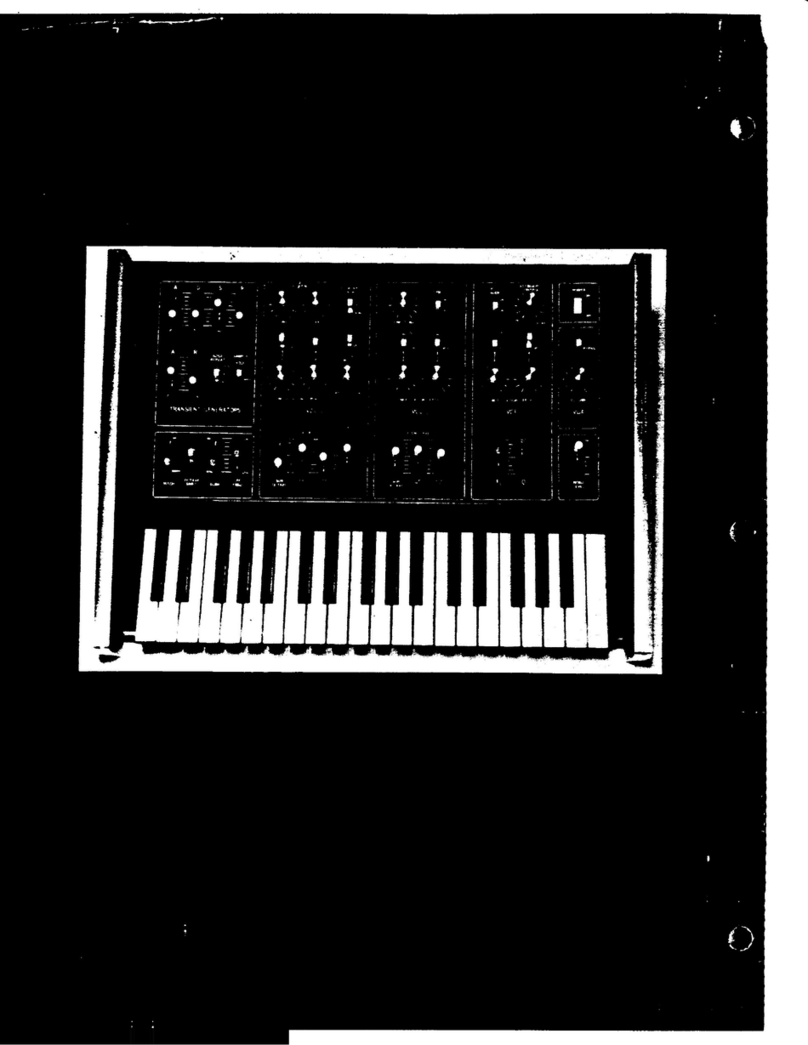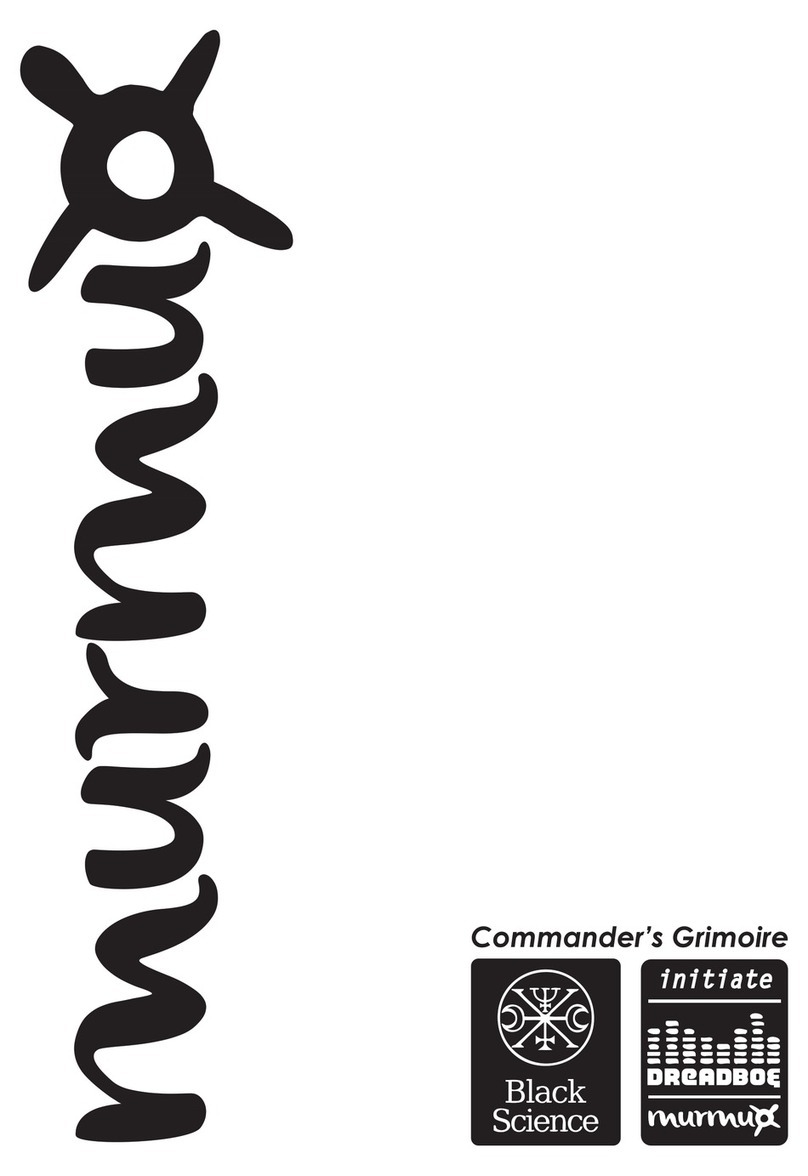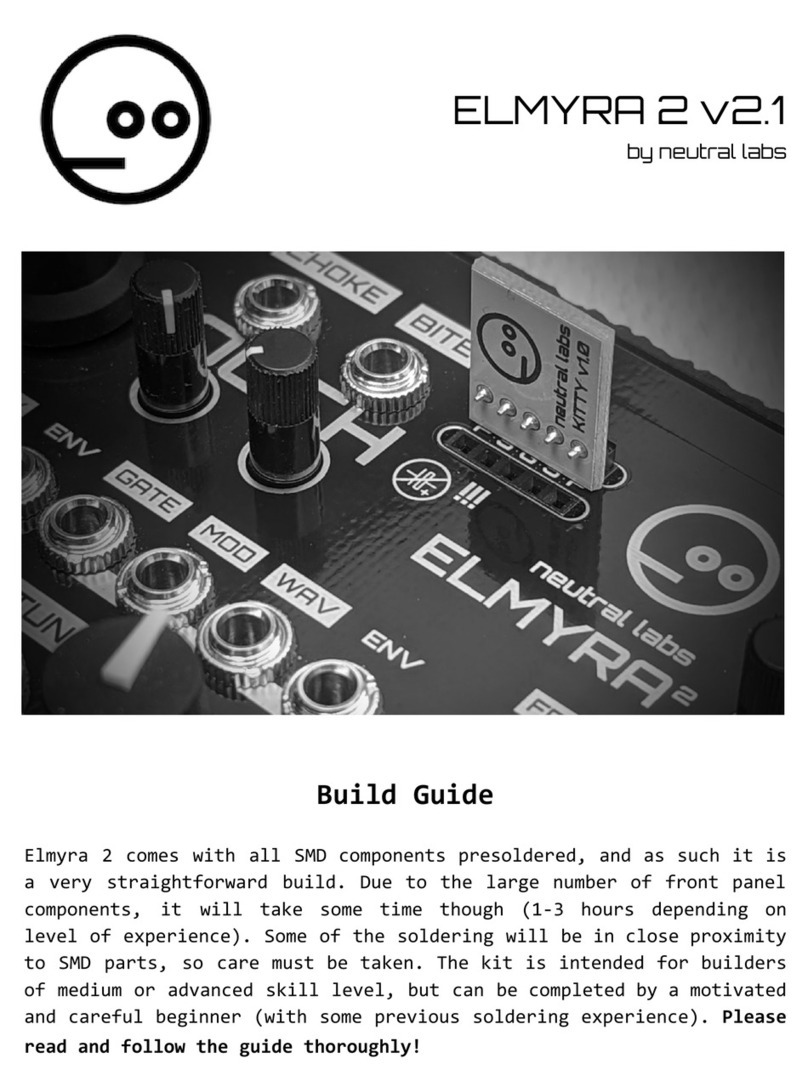
page 6 of 6
985-40000-01170 Rev.A
2021-02-02
Condential, for internal use only. Not to be reproduced.
page 6 of 6
Condential, for internal use only. Not to be reproduced.
Music Tribe accepts no liability for any loss which may be suered by any person who relies either wholly or in part upon any description, photograph, or statement contained herein.
Technical specications, appearances and other information are subject to change without notice. All trademarks are the property of their respective owners. Midas, Klark Teknik,
Lab Gruppen, Lake, Tannoy, Turbosound, TC Electronic, TC Helicon, Behringer, Bugera, Oberheim, Auratone and Coolaudio are trademarks or registered trademarks of Music Tribe Global
Brands Ltd. © Music Tribe Global Brands Ltd. 2021 All rights reserved.
Synthesizers and Samplers
CAT
Connect the negative probe of your voltmeter to GND (shown in gure 3).
Turn o the power and unplug the power connector.
Measure the output voltage. It should read +2.000 V (+/-0.5mV).
Make sure the internal connections are still correctly inserted and secured.
If not, then adjust the OCT ADJ potentiometer (VR45) until the measured output voltage is +2.000 V (+/-0.5mV).
Ret the top panel back into the bottom chassis and secure with all the screws.
This calibration is done after the oscillator calibration. The positions of knobs and switches are shown in red on Figure 1.
Connect a guitar tuner to the rear panel main 1/4" output.
OCTAVE Calibration (user mode)
Turn on the VCO1 SAW fader.
Set the position of the front panel OCTAVE SHIFT to -2. On your external keyboard, press the A4 key and adjust the
FREQUENCY knobs of VCO1 while observing the tuner display (A4 with OCTAVE SHIFT at -2: 110Hz).
Set the position of OCTAVE SHIFT to +2, observe the tuner display (A4 with OCTAVE SHIFT at +2: 1760Hz). If not, then
adjust the OCT ADJ potentiometer (VR45 on the bottom side) until the frequency is correct.
End of Procedure
Connect the positive probe of your voltmeter to TP20 (shown in gure 3).
